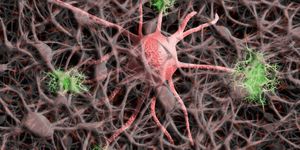A breakthrough for RSV vaccine - end of a journey
Infection from Respiratory Syncytial Virus (RSV) resembles a cold but can become severe in young children, older adults, and immunocompromised patients. In the US, about 58,000 children are hospitalized annually, and between 100 and 500 deaths occur in children below five years. RSV was discovered in 1956, but the virus has evaded vaccines and burdened the health care system in the US. A severe RSV infection can result in pneumonia or bronchiolitis in at-risk individuals. In the 1960s, multiple clinical trials for RSV vaccines using the inactivated virus failed. The vaccine caused the inactive virus to stimulate the immune system abnormally, making subjects in the trial sicker when they encountered the virus. Eighty percent of children enrolled in the trials in these trials were hospitalized. The unfortunate failure of the trials stalled vaccine development and testing for decades for obvious reasons.
Decades later, scientists learned about the detailed structure of the RSV virus. Specifically, a protein called F protein on the viral surface they found changes its shape after viral entry into cells. RSV uses the F ‘prefusion’ protein to enter cells. Thus, producing antibodies against the F protein after it has changed shape is not effective at preventing infection. These ‘postfusion’ antibodies made after viral entry tend to worsen the situation by triggering the immune system and causing inflammation – the cause for failed clinical trials in the 60s. Identifying the structural differences between the prefusion and postfusion F protein was a turning point in the RSV vaccine story. Scientists Jason McLellan (at the University of Texas at Austin) and Barney Graham (at Morehouse School of Medicine) used X-ray crystallography to determine the structures of F protein in different conformations. They compared different structural conformations of the F protein to determine changes after fusing to the host cell. X-ray crystallography can provide atomic-level resolution of proteins. When a protein changes its shape or conformation during its function, the X-ray structure of the altered protein will also look different. Understanding this shift in protein conformation helped scientists identify the correct antigen conformation that could induce antibodies before the F protein facilitates virus entry. Vaccine design based on protein conformation has also been used for SARS-CoV-2 and in the development of the COVID vaccine by Moderna and Pfizer. Thanks to the advanced methods developed to determine protein structures, structure-based vaccine design is becoming more significant in vaccine development. For example, knowing the F protein conformation was a crucial piece in solving the puzzle of the RSV vaccine.
The US FDA has now approved two RSV vaccines for 60 and older by Pfizer and GlaxoSmithKline. More vaccine trails for RSV are on the way awaiting FDA approval this year. Barney Graham, who has been studying RSV throughout his career and a key contributor to RSV vaccine development says says, “The first twenty years of my career were spent trying to understand why the RSV vaccine safety problem occurred back in the mid-sixties… So now, getting to this point where we think we can make a vaccine for RSV safely and now have the efficacy is very exciting.”
Sources: National Foundation for Infectious Diseases (nfid.org), Nature, The Scientist, Scientific American









